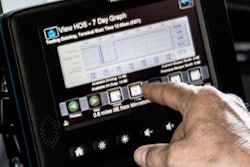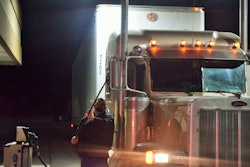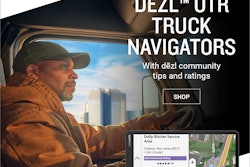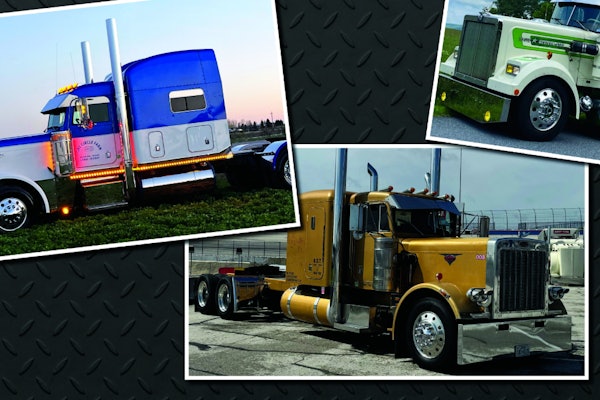
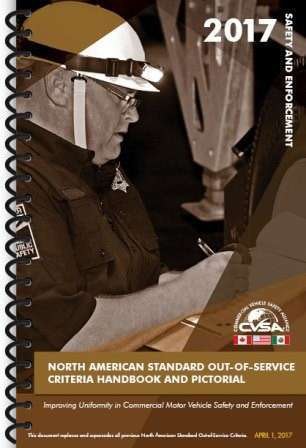 CVSA’s out-of-service criteria handbook. Find more about the handbook’s usefulness in DataQs challenges to violations via this link.
CVSA’s out-of-service criteria handbook. Find more about the handbook’s usefulness in DataQs challenges to violations via this link.The Commercial Vehicle Safety Alliance’s announcement of the availability of this year’s updated edition of its out-of-service criteria handbook noted the addition of criteria related to electronic logging devices. Unlike for other updates, however, the alliance didn’t spell out what those additions were.
None are new out-of-service conditions, perhaps the reason they weren’t directly shared. Rather, they’re footnotes related to current out-of-service conditions having to do with the hours of service themselves, namely having no logbook, having no previous seven days of logs, and presenting a false log, all of which call for an out-of-service declaration for the driver in force for 10 consecutive hours.
Here’s how they’re written (italics), with my notes following each (and for clarity’s sake, none of these apply if you’re otherwise exempted from using and ELD, whether you’ve got a pre-2000 model year truck or are running under short-haul exceptions to the hours of service or another exemption):
Footnotes related to ELDs; all go in force on December 18, 2017, if nothing changes:
**If a driver/carrier is using an electronic logging device that is not authorized by the Federal Motor Carrier Safety Administration per 395.22(a), the driver/carrier is considered to have no record of duty status.

So this one would be the equivalent of having no logbook at all, if the driver/carrier isn’t using an ELD on the FMCSA’s device registry – 10 hours out of service, as noted above. There’s a wrinkle in this one, though, given FMCSA’s grandfather period for current-generation Automatic Onboard Recording Devices (AOBRDs). As I wrote in the intro to our April ELD market guide: “At this stage, part of the complexity involving the registry is that automatic onboard recording devices meeting fairly minimal requirements compared to ELD specs are essentially grandfathered through Dec. 16, 2019. The [ELD mandate] rule notes that any carrier installing an AOBRD prior to this year’s ELD enforcement date can use that device until the 2019 date. Practically, what that means is that enforcing the requirement to use a registry-listed device is unlikely before that time, particularly for carriers who comply with the ELD rule and install an engine-connected e-log prior to Dec. 18. So the registry’s importance for carriers choosing ELDs at this stage is minimal.”
If placed out of service for this one prior to 2019, and you have proof you were using an engine-connected e-log prior to Dec. 18 this year, you may have cause for a challenge to remove it from your record. At once, I suspect most well-known ELD providers are likely to be on the registry prior to December.
**If a driver is unable to produce or transfer the data from an automatic on-board recording device or electronic logging device to an authorized safety official as required by 395.15(b) or 395.24(d), the driver is considered to have no record of duty status.
Again, no log book, 10 consecutive hours out of service. Though the FMCSA hasn’t rolled out the data-transfer software to states yet, the process is under way. We’ll be updating you on what you can expect in this department in the July issue. Preliminary conversations with state enforcement officials lead me to the conclusion that the ELD’s display and/or ability to print will be key in a lot of log checks, unless violations are found, at least initially. So during roadside stops you’ll likely be handing your device to officers in many states — or if you’re utilizing the Continental VDO RoadLog, printing your logs for them. A lot of states are already accepting log data via officers’ email, so that backstop process for most devices, too, may stand in for FMCSA’s central emailing system if it’s not in place everywhere before the end of the year.
**If a driver indicates use of a special driving category as defined by 395.28(a) when not involved in that activity, the driver’s log is considered to be false.
False log also comes with 10 hours out of service. And the most interesting wrinkle here is in the special driving categories themselves, yard moves and personal conveyance, both of which are required to be an option in ELDs (for more on how they’ll work, follow this link).
At the CVSA Workshop in Atlanta last month, the Driver and Traffic Committee was set to discuss a call by some members to petition the FMCSA for more clarity in the definition of personal conveyance in the regs – right now, it’s fairly murky when it comes to allowable distance and other factors. (Find recent discussions of it at this link and this link.) However, questioned about potentially clarifying it, FMCSA reps in attendance noted that changing it would require a formal rulemaking. That, under the Trump administration, might well be very unlikely, given barriers to new rules put in place.
I was not in attendance for the entirety of the Driver and Traffic Committee discussion, but will update you later on the final verdict, if there was one, coming out of it on personal conveyance.
**If a driver with a malfunctioning automatic on-board recording device or electronic logging device fails to reconstruct logs for the current twenty-four (24)-hour period and the previous seven (7) days as required by 395.15(f) or 395.34(a)(2), the driver is considered to not have the previous seven (7) days of logs.
Fortunately, in cases like this, if you’re a true independent with authority and you have access to the web at roadside, with most ELD platforms you’ll be able to access your logs to either email to an officer or print to carry with you down the road in case of an inspection. Keep a paper log in the truck for on-the-spot malfunction backups for that current period, too. If you’re leased or a company driver and the ELD malfunctions, I’ve come across situations where drivers have had their previous seven days’ logs emailed to them by dispatch or a company safety official after moving to a paper log, or emailed directly to an officer during an inspection.
**If a carrier does not repair a malfunctioning electronic logging device within eight (8) days, or obtain an extension from the Federal Motor Carrier Safety Administration Division Administrator as required by 395.34(d), the driver is considered to have no record of duty status.
I covered these requirements of drivers and carriers in the intro to the recent ELD guide, offering questions for any ELD provider: “The final rule specifies an eight-day timeframe for repairing/replacing a malfunctioning ELD. Does the provider stock the kind of hardware inventory to meet such a quick turnaround? How are replacements/repairs handled? For carriers needing more than eight days to replace any ELD, the rule also spelled out a process for requesting more time. It involves contacting your state’s FMCSA division office and making your case.”
**If a driver does not log into the electronic logging device as required (see 395.22(e)), the driver is considered to have no record of duty status.
Essentially, if you’re not using the ELD like it’s supposed to be used (logged in with your profile), 10 hours out of service…
**If a driver is required to have an electronic logging device and the vehicle is not equipped with an electronic logging device (or an automatic on-board recording device until December 17, 2019), the driver is considered to have no record of duty status.
That’s the kicker, of course, coming into play at the end of the year – it will be an out of service violation (10 hours, again) to run without an ELD if the rules require you to, if nothing changes, of course, between now and then. In terms of your company safety record, your own if you’ve got authority, having no log comes with a 5 (out of 10) severity weight in the CSA Safety Measurement System – not publicly available at the moment, but still impactful in some business relationships. OOS violations in the CSA SMS’ scoring methodology receive extra weight, too, 2 more points.
CVSA detailed other additions to the 2017 out-of-service criteria in the document available at this link.





